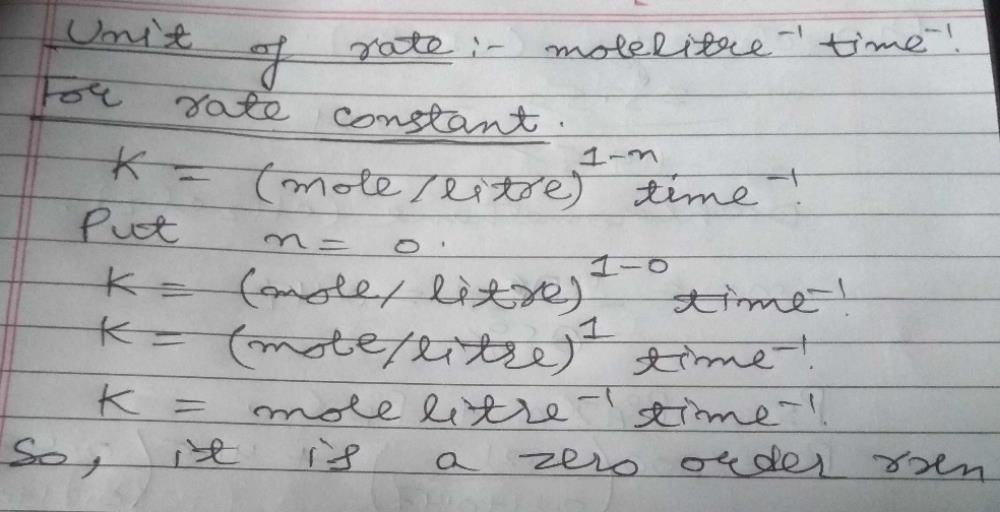NEET Exam > NEET Questions > Units of rate constant and rate of reaction a...
Start Learning for Free
Units of rate constant and rate of reaction are same for a reaction than order of reaction?
Most Upvoted Answer
Units of rate constant and rate of reaction are same for a reaction th...
# unit of rate of reaction = unit of concentration / unit of time hence r= M ( mol L^ -1) / s =>>> Ms^ -1............[i]# General formula of unit for rate constant i.e..., k = M^(1-n ) s^ -1 where..........n= order of reaction # put n= 0 (zero) Then k = M^(1-0) s^ -1 ====>>> M^1 s^ -1 = mol L^ -1 s^ -1= Ms^ - 1.........[ ii ]from (I) and (ii) unit of rate of reaction is equal to unit of rate constant for zero order reaction. # if u will put n= 1,2,3 units does not come same, u can try it.
Community Answer
Units of rate constant and rate of reaction are same for a reaction th...


|
Explore Courses for NEET exam
|

|
Similar NEET Doubts
Units of rate constant and rate of reaction are same for a reaction than order of reaction?
Question Description
Units of rate constant and rate of reaction are same for a reaction than order of reaction? for NEET 2025 is part of NEET preparation. The Question and answers have been prepared according to the NEET exam syllabus. Information about Units of rate constant and rate of reaction are same for a reaction than order of reaction? covers all topics & solutions for NEET 2025 Exam. Find important definitions, questions, meanings, examples, exercises and tests below for Units of rate constant and rate of reaction are same for a reaction than order of reaction?.
Units of rate constant and rate of reaction are same for a reaction than order of reaction? for NEET 2025 is part of NEET preparation. The Question and answers have been prepared according to the NEET exam syllabus. Information about Units of rate constant and rate of reaction are same for a reaction than order of reaction? covers all topics & solutions for NEET 2025 Exam. Find important definitions, questions, meanings, examples, exercises and tests below for Units of rate constant and rate of reaction are same for a reaction than order of reaction?.
Solutions for Units of rate constant and rate of reaction are same for a reaction than order of reaction? in English & in Hindi are available as part of our courses for NEET.
Download more important topics, notes, lectures and mock test series for NEET Exam by signing up for free.
Here you can find the meaning of Units of rate constant and rate of reaction are same for a reaction than order of reaction? defined & explained in the simplest way possible. Besides giving the explanation of
Units of rate constant and rate of reaction are same for a reaction than order of reaction?, a detailed solution for Units of rate constant and rate of reaction are same for a reaction than order of reaction? has been provided alongside types of Units of rate constant and rate of reaction are same for a reaction than order of reaction? theory, EduRev gives you an
ample number of questions to practice Units of rate constant and rate of reaction are same for a reaction than order of reaction? tests, examples and also practice NEET tests.

|
Explore Courses for NEET exam
|

|
Signup for Free!
Signup to see your scores go up within 7 days! Learn & Practice with 1000+ FREE Notes, Videos & Tests.
























